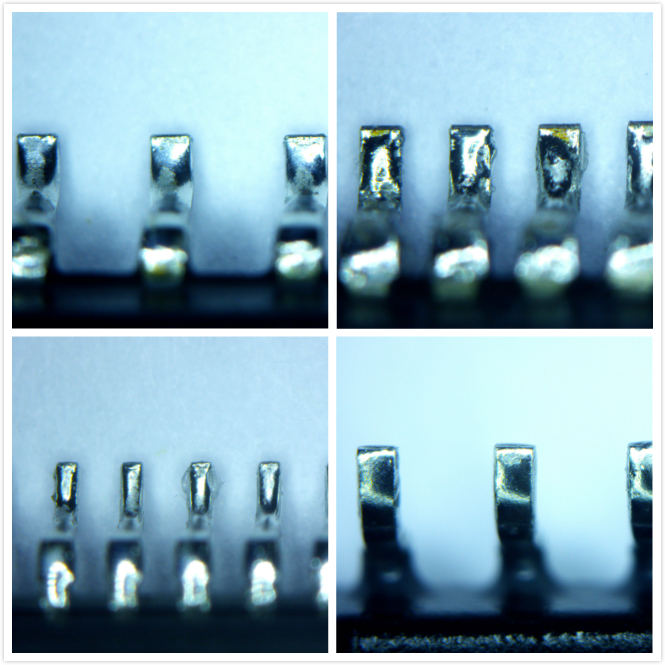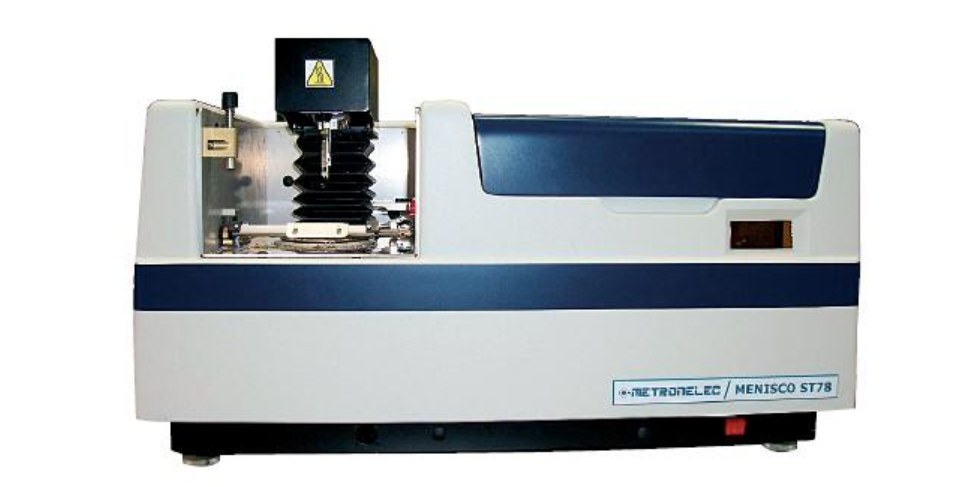Description: According to the test standard of the solderability test, this test mainly detects whether the soldering ability of the chip pins meets the standard.
Solderability test picture:

Picture of solderability test equipment:

Solderability test concept
In the process of assembling and soldering electronic products, poor selection of solderable ends or solder paste on circuit boards and components, and poor quality of flux will cause soldering problems, which directly affect the quality of the product. The main welding problems include poor wetting, bridging, cracks, etc., which will increase the workload of quality control and produce a lot of repairs, resulting in waste of manpower and financial resources, such as false welding, false welding and poor welding strength, which will directly lead to reliability. Sexual issues. The solderability test quantifies the solderability of the incoming material by testing the solderability of the tested sample, and directly provides guidance on whether the incoming material can be put into production or can be put into production after the adjustment of the process window. For units that come in batches of components, the solderability test is more meaningful for units that have a long storage time due to the small output. The solderability evaluation of the components can be carried out before they are used to determine whether the use of this batch of components will be successful. Lead to the occurrence of welding quality problems.
Solderability test principle
The solderability test is to determine the quality of the sample by selecting the sample, simulating the welding process, and determining the quality of the sample according to the test result. In the electronics industry, the solderability test is carried out by measuring the quality of the solder paste and flux used, and the quality of the soldering process when evaluating the impact of the installed sample. The test method of the wetting balance (or wetting balance) is to measure the strength of tin and rapid wetting through the sensor to detect a small force level and the binding time. The specific sample is placed on the fixture, and the sample is immersed in the solder at the specified temperature. The force and time data are transmitted to the upper computer through the sensor, and the curve and data file are formed through the software to accurately and quantitatively evaluate the soldering quality.
The purpose and significance of solderability test
Solderability testing is generally used to make a qualitative and quantitative assessment of the solderability of components, printed circuit boards, solders and fluxes. In the assembly and welding process of electronic products, the quality of welding directly affects the quality of the whole machine. Therefore, in order to improve the welding quality, in addition to strictly controlling the process parameters, it is also necessary to conduct scientific solderability tests on the printed circuit boards and electronic components.
Through the implementation of solderability testing, it helps companies determine the solderability and product quality after production and assembly. In practice, the microspectroscopy technology has further enriched the technical means of solderability testing of printed circuit boards and other components, clarified the internal factors affecting solderability, and improved product quality and zero defects for technical engineers in the manufacturing industry. The welding process has given a great help.
Development Trend of Solderability Test Technology
Solderability testing is generally used to make a qualitative and quantitative assessment of the solderability of components, printed circuit boards, solders and fluxes. In the assembly and welding process of electronic products, the quality of welding directly affects the reliability and quality of the whole system.
Through the implementation of solderability testing, it helps companies determine the solderability and product quality after production and assembly. Microspectroscopy technology has further enriched the solderability testing technical methods for printed circuit boards and other components in practice, clarified the internal factors affecting solderability, and improved product quality and zero-defect soldering for technical engineers in the manufacturing industry. The craftsmanship has given a great help.
Various methods are recommended by major international standards organizations (IEC, IPC, DIN, JIS, etc.), such as "J-STD-002B2003-2 Solderability Test of Components, Lugs, and Terminals" and "J-STD-003B (2007) -3) Solderability Test of Printed Circuit Board, "IPC-TM-6502.4.1 Solderability of Metal Surface", "GB/T4677 Printed Board Test Method", "IEC60068-2-58/IEC60068-2-20 Solderability" Standards such as "and thermal stress test" can carry out different types of solderability tests, but regardless of the repeatability of the test and the ease of interpretation of the results, the wetting balance method (WettingBalance) is currently recognized as a method for qualitative and quantitative analysis. Solderability test method.
By immersing the sample into the solder, the simulated soldering process is transferred to the image recorder, and the solderability curve is formed on the computer. The wetting balance method is to place the sample in a special fixture and immerse it in a solder paste at a set temperature. During this period, the data is transmitted to the computer through the force sensor, and the curve and data files are generated through the software to accurately and quantitatively evaluate the welding quality. This test method requires a lot of equipment investment, has certain requirements on the test environment, and the test results are accurate and convincing.




 Weixin Service
Weixin Service

 DouYin
DouYin
 KuaiShou
KuaiShou











